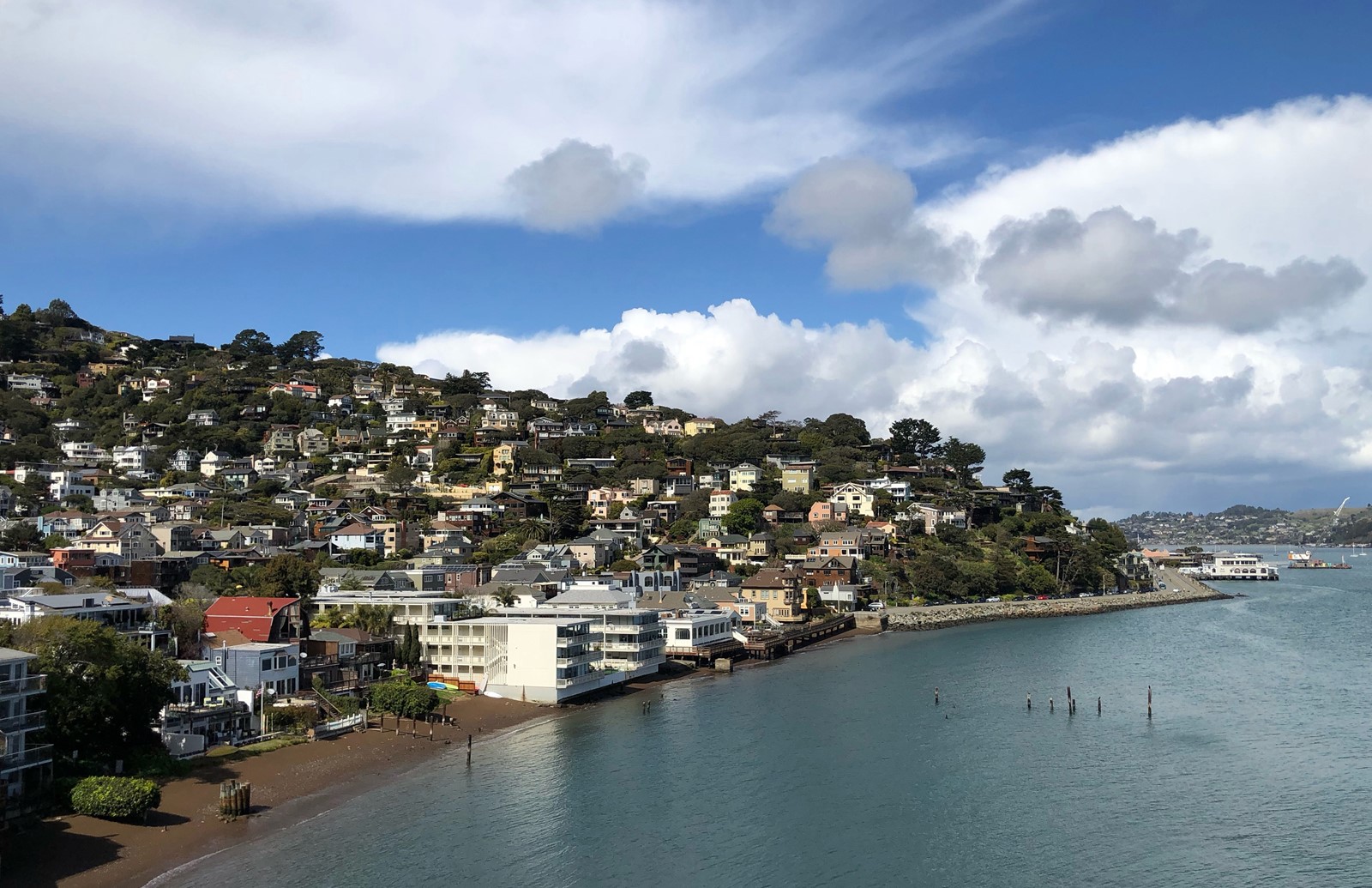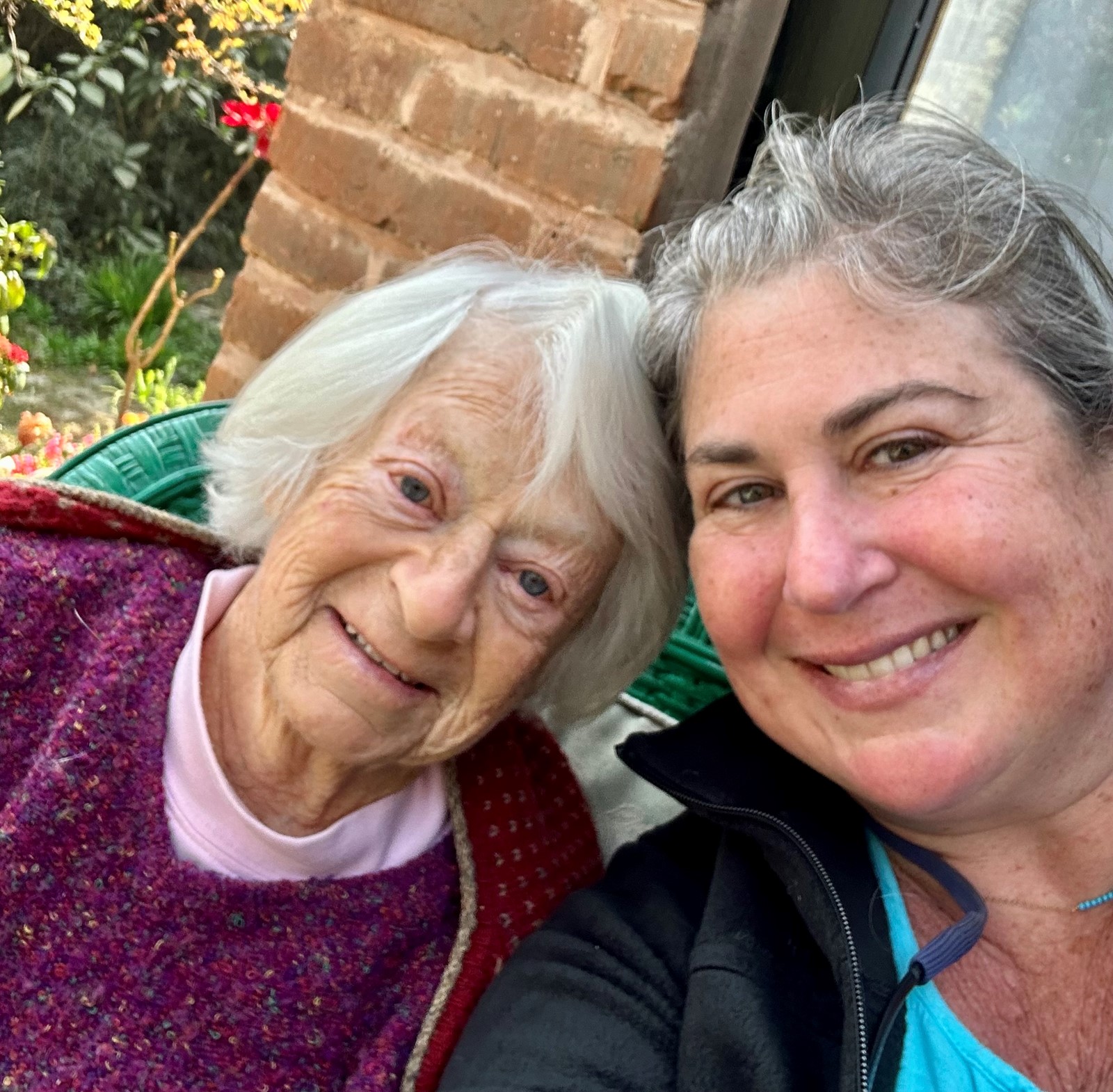

Sausalito has always been a special place for Nicole Straight. It’s where she, as a kid growing up in Mill Valley, would go crab fishing with her family, endlessly captivated by the city’s beauty and charm.
So when she and her husband Kirk wanted to leave Connecticut and return to California a few years ago, they realized the city of around 7,000 people would be the best place for them to plant new roots.
Not long after landing in the area, she started volunteering for Sausalito Village, a nonprofit that, according to its website, is “dedicated to enhancing the ability of our members to live independently and active in our community as we age.”
While driving groups of seniors to the grocery store and other spots, she’d strike up conversations and learn more about them and their relationship to the area.
“We’d be chatting in the car and I would always ask them, ‘What brought you here?’, ‘How long have you lived here?’ It was so interesting,” she said. “People have lived here since the ‘60s, the ‘70s. It got me curious, like, why have you stayed here for so long?”
It’s a part of the city’s history that she felt needed to be documented. And so, the Sausalito Project was born. The visual documentary project captures memories and stories from people who have called Sausalito home for decades. So far, she’s spoken to more than 50 people, including the late Olga Murray, the founder of Nepal Youth Foundation; an array of houseboat dwellers; NASA legend Richard R. Carley; and Cheryl Popp, the owner of Sausalito Books by the Bay.
The short videos can be seen on Instagram (instagram.com/thesausalitoproject) as well as on their YouTube channel.
Q Tell me about your background.
A In my previous life, I was a professional chef and I’ve always been drawn to older people. I think they have such interesting lived experiences. I think in Western society we really devalue older people. I’ve always volunteered with older people. When we lived in Connecticut, I used to volunteer at our senior center there and taught poker classes for about five years there. It was so much fun. And then when we moved to Sausalito, I found Sausalito Village. They’re a great organization and I really do believe they’re one of the reasons why so many older people have been able to live independently well into their 80s and 90s in Sausalito. And, in my own little way, this project is an homage to everybody who’s been really friendly here since we’ve moved here, and a way of saying thank you to the community.
Q What inspired you to start the project?
A I sat on this for about six or seven months and I thought, well, I don’t know how to do videos and I don’t know how to edit videos. I have two grown daughters and I always talk to them about how we only get better by failing at things and that’s OK. And here I was not taking my own advice. I thought, I’ve just got to start. I got to be really friendly with Olga, and we would go to lunch together. She was the very first video. I was so inspired by her.
I took her to go see “Oppenheimer,” and she said, “I remember working in Washington, D.C., for this muckraker.” And she’s remembering these times. I thought, I have to capture this, but I wanted to make it specific to Sausalito.
I spent some time talking to a gerontologist to help me create the questions. They’re meant to be short interviews, to get to the crux of who are you, what brought you here and what do you like about living here? We actually got to be really good friends and she started a nonprofit in Nepal.
One day, I was taking her home from Safeway and she said, “You and your husband should come to Nepal.” She was 96 at the time.
So, we actually flew to Nepal and stayed with her and spent two weeks there. It was the most remarkable trip. It was this incredibly special moment.
Q What have you enjoyed about doing this?
A It feels really special to capture these moments in time. Quite frankly, I think three or four people have died since then, because they’re in their 90s and they’ve had full lives. This guy Joe who I interviewed was a trip. He talked about working for the mafia in New York. Two days after I interviewed him, he died. I felt so lucky just to be able to meet him and capture his story. I interviewed Tom Hoover, who is a longtime resident who’s lived on a houseboat. He had some incredible stories about when Sausalito tried to take all the houseboats away. I had actually never been on a houseboat until I started this project. What I think is neat about this project is that anyone can do this anywhere. This is an important thing to be doing.
Everybody should be capturing people’s stories.I’ve had some people who say, “I don’t have anything to say.” And I say, if you’ve lived here and you’ve been alive for seven, eight, nine decades, that’s your story. What is your relationship to Sausalito? Because if you’ve lived here for a long time, there’s something keeping you here.
Q Through this, have you gained a deeper appreciation for Sausalito?
A Oh, absolutely. I wake up every day and I’m like, I can’t believe I live here. This feels so special to me to really get to know Sausalito and its history through first-person narratives.
And it’s been also fun for me, as I get closer to their decades, to be like, we all can learn something new at any point in our lives. I think that’s an important message as we progress through the next chapters of our lives.
Interested in participating or learning more? Email Straight at nstraight@mac.com.


 PREVIOUS ARTICLE
PREVIOUS ARTICLE
